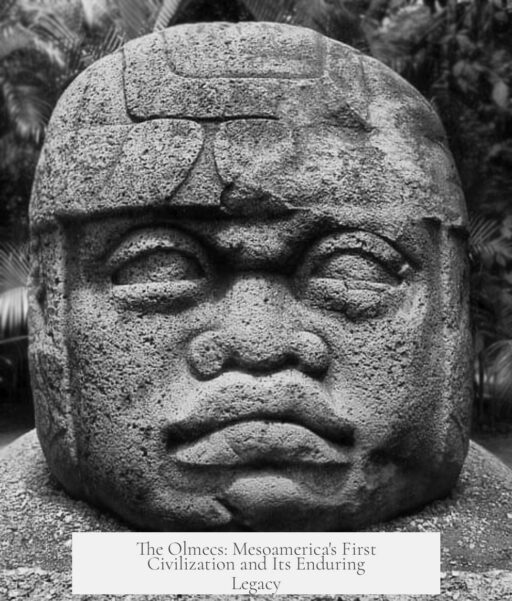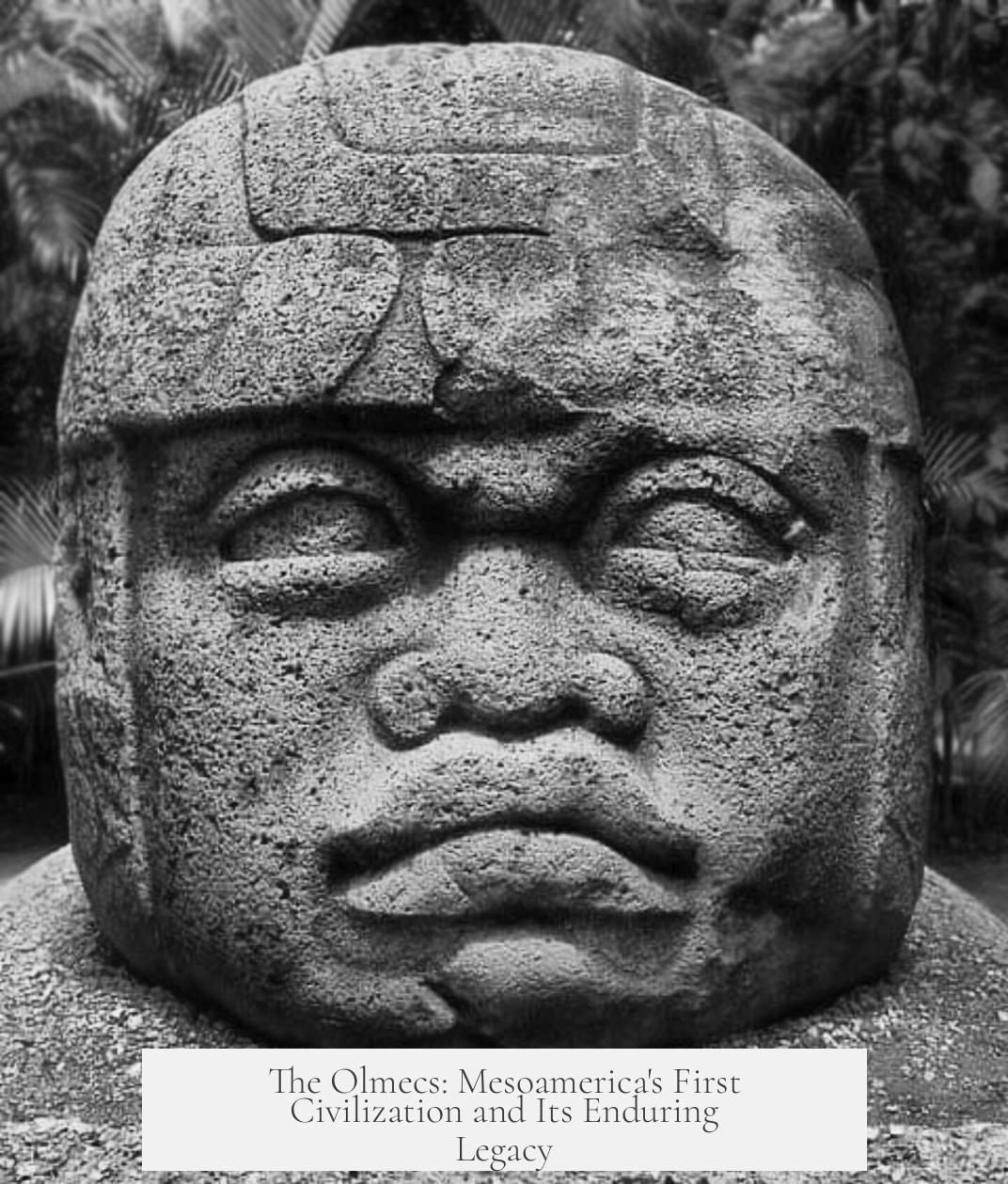The Olmecs represent one of the earliest complex civilizations in Mesoamerica, flourishing primarily in the Isthmus of Tehuantepec around 1400 BCE. They established influential city-states like San Lorenzo and La Venta, forming cultural foundations that influenced subsequent civilizations such as the Maya and Aztecs.
The Olmecs did not form a unified empire but rather a network of city-states. Their urban centers featured large ceremonial complexes and early monumental architecture. For example, La Venta contained a significant earthen mound shaped as a stepped pyramid, a precursor to later Mesoamerican pyramidal designs.
Olmec society practiced agriculture, focusing on crops like corn, and likely participated in the Ball Game, a cultural activity seen throughout Mesoamerica. They performed human sacrifices and worshipped early versions of gods later prominent across the region. The Olmec storm god, sometimes termed the ‘were-jaguar,’ evolved into deities such as Tlaloc for the Nahua and Chaac for the Maya.
Trade extended widely from Olmec centers, reaching the Valley of Mexico and regions like Guerrero. They worked jade sourced from Guatemala, highlighting long-distance exchange networks. Olmec cultural influence likely spread more through trade and shared practices than military conquest.
Following the decline of major sites like San Lorenzo and La Venta, the Olmecs transitioned into the Epi-Olmec phase, persisting in smaller centers until about 250 CE. This later phase exhibits overlaps with early Mayan culture, especially at sites like Izapa in Chiapas.
The Epi-Olmecs developed a writing system evident in scattered artifacts such as La Mojarra Stela 1. This script resembles Maya hieroglyphs but remains undeciphered, limiting understanding of Olmec literacy and record-keeping.
| Aspect | Details |
|---|---|
| Location | Isthmus of Tehuantepec, Mexico |
| Timeframe | First sites around 1400 BCE; Epi-Olmec until ~250 CE |
| Key Sites | San Lorenzo, La Venta, Izapa |
| Cultural Features | Human sacrifice, Ball Game, agriculture, early gods worship |
| Architecture | Ceremonial centers, earthen pyramids |
| Trade | Wide-ranging, jade from Guatemala |
| Writing | Epi-Olmec script undeciphered |
- Olmecs laid cultural groundwork for Mesoamerica.
- They created ceremonial centers with early monumental designs.
- Practiced agriculture, rituals, and possibly invented the Ball Game.
- Had extensive trade routes spread across Mesoamerica.
- Epi-Olmec phase shows transition into early Maya culture.
- Developed an undeciphered writing system.
What Do We Know About the Olmecs? Unpacking Mesoamerica’s First Big Deal
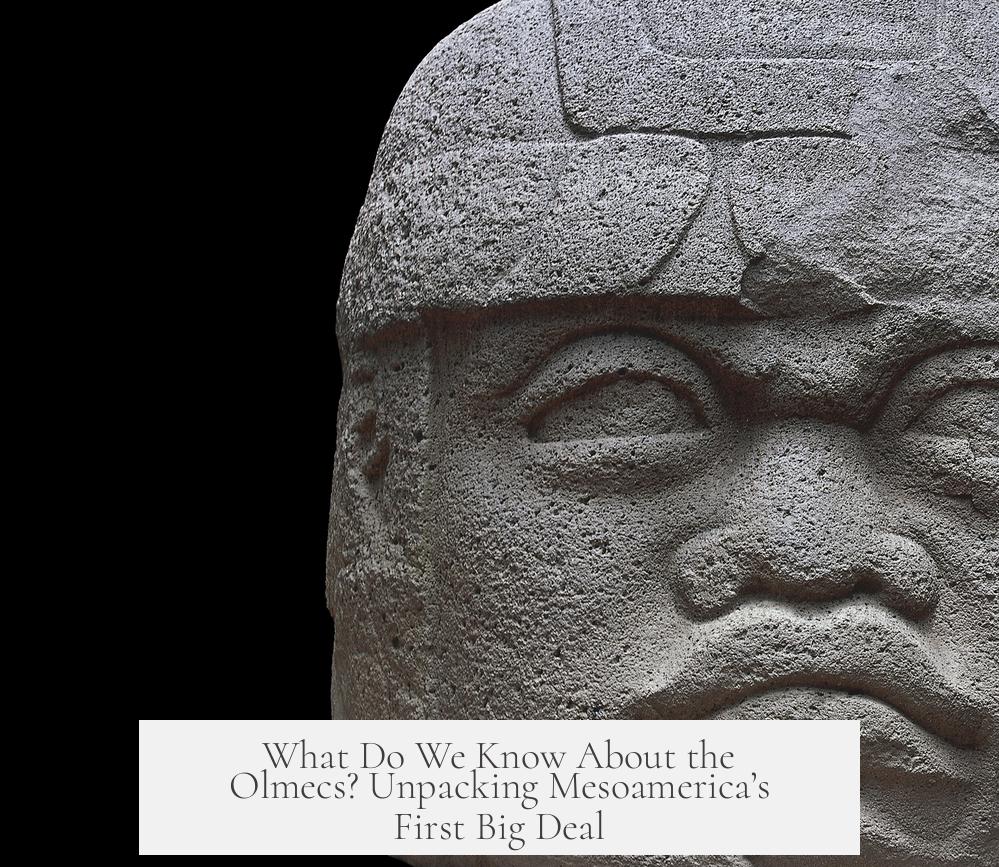
The Olmecs are often seen as the mysterious ‘big sibling’ of ancient Mesoamerican cultures—trailblazers who set many of the region’s iconic traits in motion. Their civilization, which thrived around 1400 BCE in what’s now the Isthmus of Tehuantepec, isn’t just a footnote; it’s the foundation for many later societies like the Maya and the Aztecs. Let’s explore what makes the Olmecs crucial in history—and why they’re way more than just giant stone heads.
The Olmec Locale: Mexico’s Skinny Neck Gets Legendary
In terms of geography, the Olmecs claimed the Isthmus of Tehuantepec, that narrow stretch of land in southern Mexico. Think of it as the skinny neck connecting the bulk of Mexico with Central America. While the Maya blossomed in the lush Maya Area and the Aztecs rose around modern-day Mexico City, the Olmecs had their own turf well before them.
San Lorenzo is generally hailed as their pioneering urban center, kicking off around 1400 BCE. Later, La Venta took the spotlight and grew into a major ceremonial hub. Both locations offer key insights into the early Olmec civilization and their architectural ambition.
City-States, Not Empires: The Olmec Way
Unlike the Aztecs or even the later Maya kingdoms, the Olmecs didn’t operate under one giant empire. Instead, their culture spread over several city-states for centuries. This network of urban centers functioned semi-independently but shared cultural threads, rituals, and artistic styles.
It’s like a tight-knit club rather than a dictatorship ruling with an iron fist. This decentralized structure helped Olmec culture evolve in varied ways while maintaining core traditions across their sites.
Monumental Architecture: Step Pyramids Before Stone Thrones
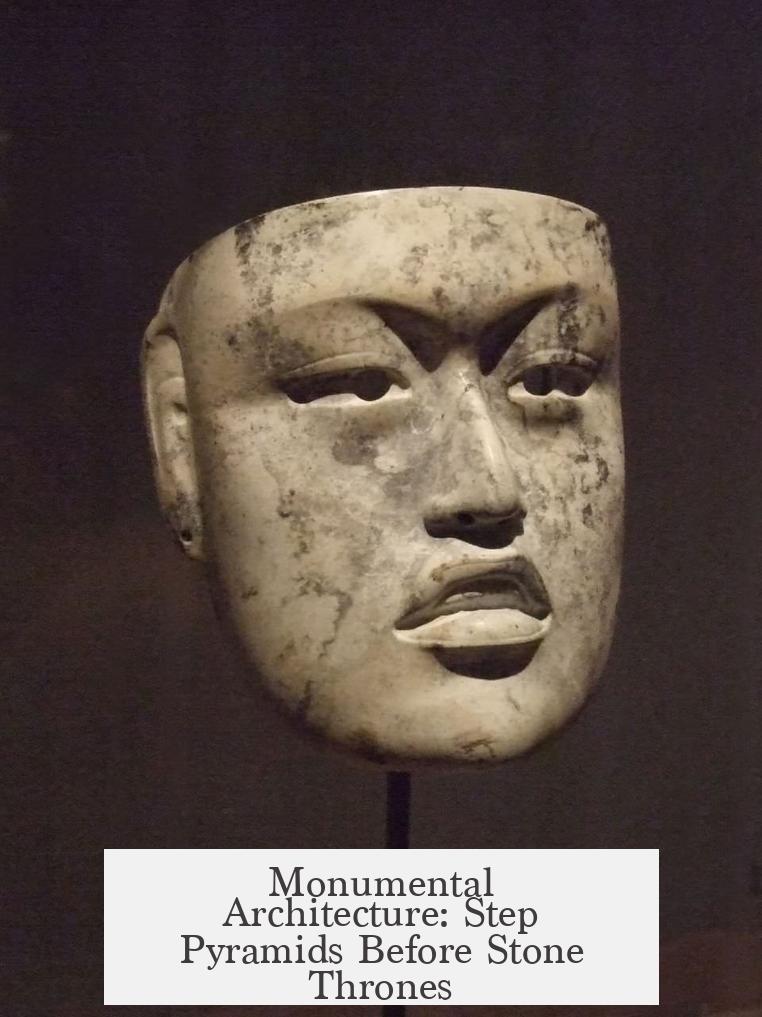
Olmec cities featured large ceremonial spaces—ancestors to the pyramid complexes seen later. At La Venta, archaeologists uncovered a massive earthen mound shaped like a stepped pyramid. It wasn’t stone-faced like the Egyptian or later Mesoamerican pyramids, but its size and form signified impressive planning and labor organization.
Imagine a community coming together to build such a project without modern tools. That’s teamwork and devotion for you.
Cultural Glue: Corn, Sacrifice, and the Ball Game
The Olmecs were early adopters—or originators—of many hallmark Mesoamerican cultural practices. They cultivated corn, the staple crop that fueled societies for millennia. Human sacrifice was part of their religious rites, fitting a pattern that persisted in the region.
And then there’s the Ball Game—yes, the one involving rubber balls and ritual significance. Archaeologists have found rubber balls at Olmec sites, suggesting they pioneered this famous sport. Could they have invented the calendar system too? Possibly, though evidence is murky on whether they actually used it regularly.
These facts underline why scholars label the Olmecs as the “cultural ancestors” of later civilizations like the Maya and Aztecs.
Gods, Symbols, and the Were-Jaguar Mystique
One striking aspect is Olmec religion and iconography. They worshipped early versions of gods who reappeared in different guises among later Mesoamerican cultures. The Olmec storm god is famously depicted as the ‘were-jaguar’—a creature with feline and human traits.
This diagram by Miguel Covarrubias—one of the discoverers of the Olmec civilization—traces how this deity’s image evolved into Tlaloc for the Nahua and Chaac for the Maya.
It’s fascinating to see religious ideas morph across centuries while staying rooted in ancient Olmec origins.
Trade Routes: Jade, Art, and Far-Flung Influence
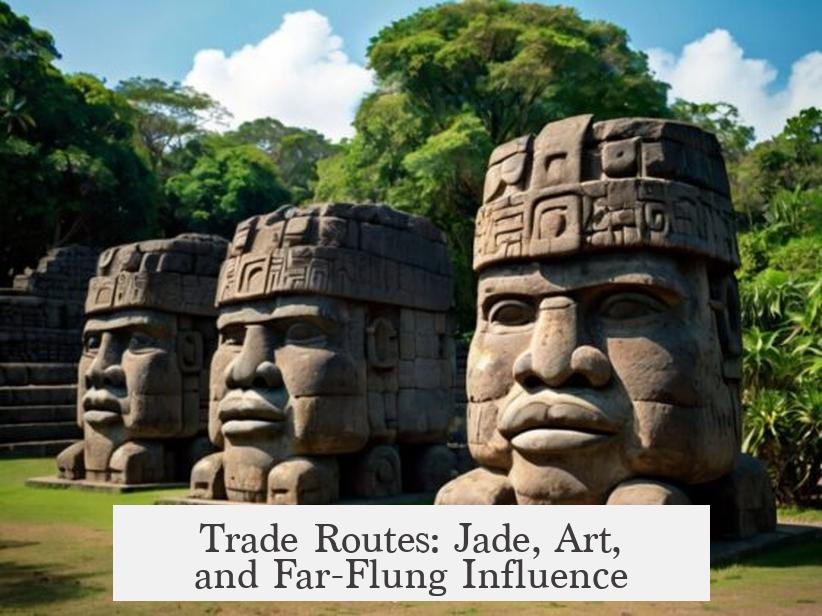
Olmec artwork and goods turned up far beyond their homeland, reaching all the way to the Valley of Mexico and Guerrero state. They prized jade, which they sourced from Guatemala, indicating wide trade networks.
This spread of art and materials sparks debates: Did the Olmecs conquer through military might, or was cultural diffusion the key? Today, scholars lean toward trade and shared beliefs as primary vehicles for Olmec influence.
The Decline: From Big City to Smaller Sites and New Cultures
Like all complex societies, the Olmec centers eventually declined. San Lorenzo and La Venta faded, but the Olmecs transitioned into the “Epi-Olmec” phase, lasting until roughly 250 CE. During this time, their culture shrank into smaller communities but didn’t vanish.
In fact, sites like Izapa in Chiapas show a blending of Olmec traits with emerging Mayan features. It’s as if the torch was passed on, torchbearers fusing old with new.
Writing: A Puzzle That Might Never Be Solved
The early Olmecs left no clear writing system. However, the later Epi-Olmecs produced scattered examples of glyphs that resemble Maya script but remain undeciphered. One famous artifact, La Mojarra Stela 1, shows these enigmatic inscriptions.
Sadly, it’s likely these texts will remain an ancient mystery. So close, yet so cryptic.
Why the Olmecs Matter Today
The Olmecs laid the groundwork for everything Mesoamerica would become. From monumental architecture and agriculture to complex belief systems and trade, they invented much that later cultures perfected.
Curious about how one civilization at Mexico’s “skinny neck” influenced thousands of years and hundreds of miles of history? The Olmecs offer a compelling story. Their legacy reminds us how interconnected culture, religion, and innovation are—even when the clues come as giant carved heads staring at us from ancient jungle ruins.
What do you find most intriguing about this ancient culture? Could the Olmecs have really invented the Mesoamerican Ball Game? Or maybe the calendar? Share your thoughts, and let’s dig deeper into the origins of one of the world’s oldest civilizations!
What geographical area did the Olmecs inhabit?
The Olmecs lived in the Isthmus of Tehuantepec, in present-day Mexico. Their earliest site, San Lorenzo, emerged around 1400 BCE.
How was Olmec society organized?
The Olmecs formed multiple city-states rather than a unified empire. Their culture spread across these cities over centuries.
What cultural contributions did the Olmecs make to Mesoamerica?
They introduced human sacrifice, cultivated maize, played the Ball Game, and worshipped deities that influenced later Mesoamerican religions.
What do we know about Olmec trade and influence?
Olmec artifacts appear across Mesoamerica. They traded widely, especially jade from Guatemala. Their impact spread mainly through cultural exchange rather than conquest.
Did the Olmecs develop a writing system?
Epi-Olmec sites show early writing that resembles Maya script but remains undeciphered. The original Olmec script, if used, is unknown.
